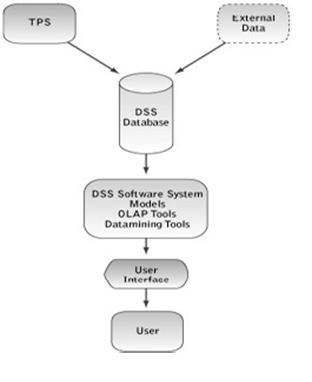Supervised and Unsupervised Learning
Data and Knowledge Mining is learning from data. In this context, data are allowed to speak for themselves and no prior assumptions are made. This learning from data comes in two flavors: supervised learning and unsupervised learning. In supervised learning (often also called directed data mining) the variables under investigation can be split into two groups: explanatory variables and one (or more) dependent variables. The target of the analysis is to specify a relationship between the explanatory variables and the dependent variable as it is done in regression analysis. To apply directed data mining techniques the values of the dependent variable must be known for a sufficiently large part of the data set.
Unsupervised learning is closer to the exploratory spirit of Data Mining as stressed in the definitions given above. In unsupervised learning situations all variables are treated in the same way, there is no distinction between explanatory and dependent variables. However, in contrast to the name undirected data mining there is still some target to achieve. This target might be as general as data reduction or more specific like clustering. The dividing line between supervised learning and unsupervised learning is the same that distinguishes discriminant analysis from cluster analysis. Supervised learning requires that the target variable is well defined and that a sufficient number of its values are given. For unsupervised learning typically either the target variable is unknown or has only been recorded for too small a number of cases.
The large amount of data that is usually present in Data Mining tasks allows to split the data file in three groups: training cases, validation cases and test cases. Training cases are used to build a model and estimate the necessary parameters. The validation data helps to see whether the model obtained with one chosen sample may be generalizable to other data. In particular, it helps avoiding the phenomenon of overfitting. Iterative methods incline to result in models that try to do too well. The data at hand is perfectly described, but generalization to other data yields unsatisfactory outcomes. Not only different estimates might yield different models, usually different statistical methods or techniques are available for a certain statistical task and the choice of a method is open to the user. Test data can be used to assess the various methods and to pick the one that does the best job on the long run.
Although we are dealing with large data sets and typically have abundant cases, partially missing values and other data peculiarities can make data a scarce resource and it might not be easily achievable to split the data into as many subsets as there are necessary. Resampling and cross-validation techniques are often used in combination to data and computer intensive methods in Data Mining.
Data and Knowledge Mining is learning from data. In this context, data are allowed to speak for themselves and no prior assumptions are made. This learning from data comes in two flavors: supervised learning and unsupervised learning. In supervised learning (often also called directed data mining) the variables under investigation can be split into two groups: explanatory variables and one (or more) dependent variables. The target of the analysis is to specify a relationship between the explanatory variables and the dependent variable as it is done in regression analysis. To apply directed data mining techniques the values of the dependent variable must be known for a sufficiently large part of the data set.
Unsupervised learning is closer to the exploratory spirit of Data Mining as stressed in the definitions given above. In unsupervised learning situations all variables are treated in the same way, there is no distinction between explanatory and dependent variables. However, in contrast to the name undirected data mining there is still some target to achieve. This target might be as general as data reduction or more specific like clustering. The dividing line between supervised learning and unsupervised learning is the same that distinguishes discriminant analysis from cluster analysis. Supervised learning requires that the target variable is well defined and that a sufficient number of its values are given. For unsupervised learning typically either the target variable is unknown or has only been recorded for too small a number of cases.
The large amount of data that is usually present in Data Mining tasks allows to split the data file in three groups: training cases, validation cases and test cases. Training cases are used to build a model and estimate the necessary parameters. The validation data helps to see whether the model obtained with one chosen sample may be generalizable to other data. In particular, it helps avoiding the phenomenon of overfitting. Iterative methods incline to result in models that try to do too well. The data at hand is perfectly described, but generalization to other data yields unsatisfactory outcomes. Not only different estimates might yield different models, usually different statistical methods or techniques are available for a certain statistical task and the choice of a method is open to the user. Test data can be used to assess the various methods and to pick the one that does the best job on the long run.
Although we are dealing with large data sets and typically have abundant cases, partially missing values and other data peculiarities can make data a scarce resource and it might not be easily achievable to split the data into as many subsets as there are necessary. Resampling and cross-validation techniques are often used in combination to data and computer intensive methods in Data Mining.
 of their effort for Data and Knowledge Mining goes into supporting the data cleansing and transformation process.
of their effort for Data and Knowledge Mining goes into supporting the data cleansing and transformation process. 